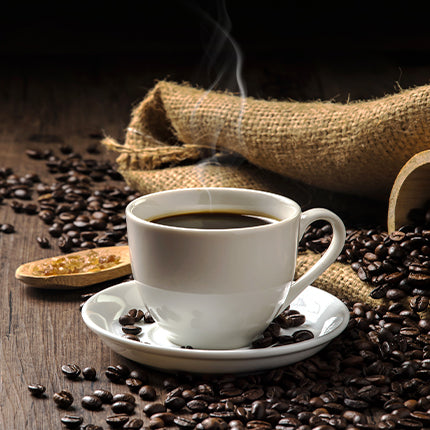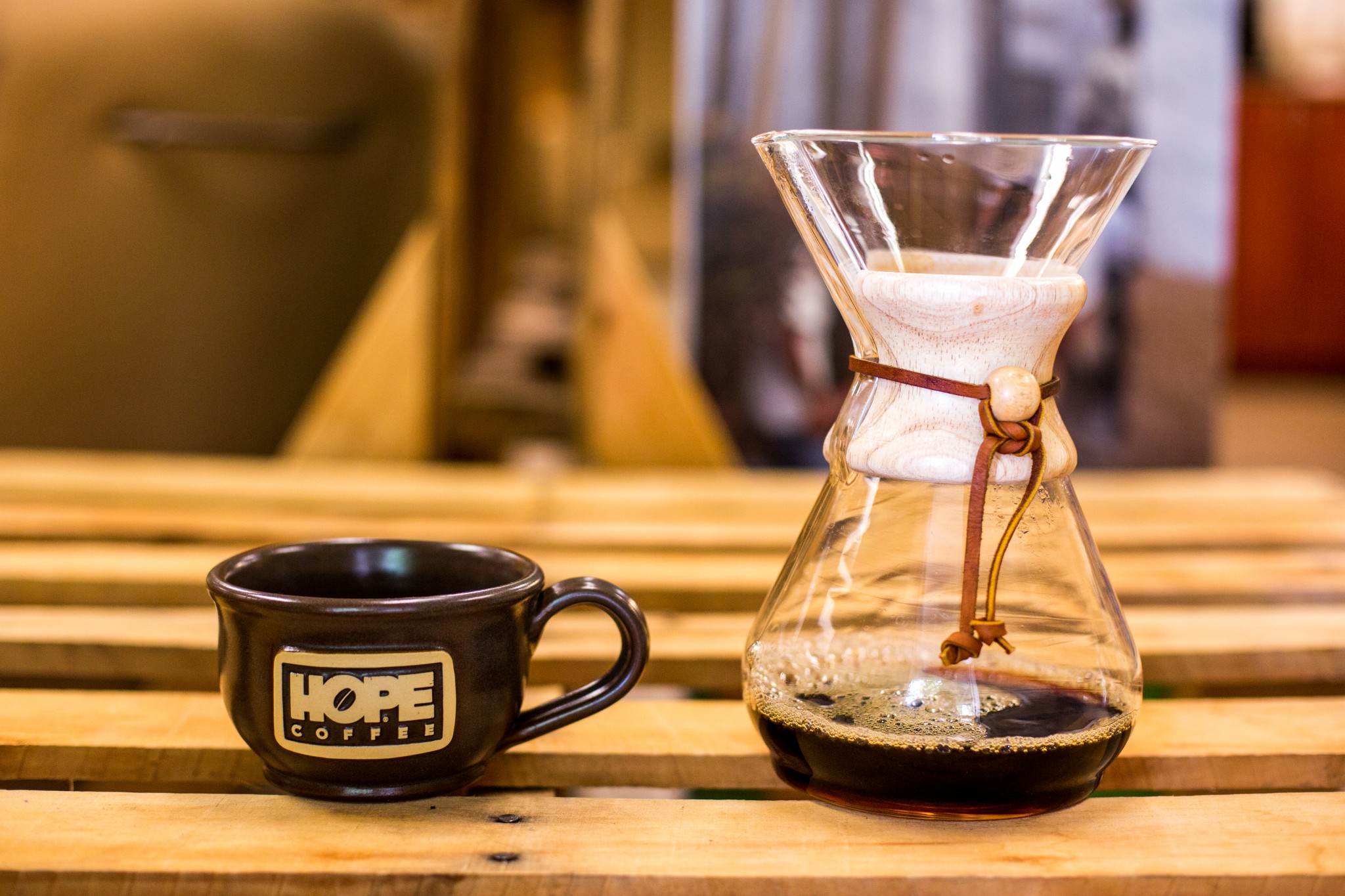Coffee Brewing Methods Debunked: From French Press to Cold Brew
Coffee Brewing Methods Debunked: From French Press to Cold Brew
Blog Article
The Science Behind Coffee Brewing: Exactly How Temperature Level and Time Affect Your Drink
Recognizing the scientific research behind coffee brewing reveals that temperature level and time are not plain variables however critical elements that determine the drink's flavor profile and overall top quality. The ideal developing temperature generally falls in between 195 ° F and 205 ° F, while the duration of removal varies substantially throughout different methods. This interplay of aspects can result in a mug that is either wonderful or unsatisfactory. As we explore the subtleties of these components, the question emerges: how can one properly balance temperature and time to attain that best mixture?
The Chemistry of Coffee Extraction
The chemistry of coffee extraction explores the detailed processes that change raw coffee beans right into the fragrant beverage enjoyed worldwide. This change largely entails the solubility of various compounds present in the beans, which are influenced by factors such as work size, water high quality, and the brewing technique used.
Throughout the developing process, warm water serves as a solvent, removing soluble compounds, consisting of caffeine, sugars, lipids, and acids, from the coffee premises. Each substance adds to the taste profile, fragrance, and body of the final beverage. For example, acids are in charge of zesty and intense notes, while oils add to a rich mouthfeel.
The extraction procedure is not uniform; different substances liquify at different rates. The first phases of brewing extract acids and sugars, causing an enjoyable acidity, while prolonged extraction can result in bitterness due to over-extraction of unfavorable compounds. Recognizing these chemical interactions is essential for optimizing developing methods, as the equilibrium between removal time and water temperature can substantially affect the total high quality of the coffee. Inevitably, grasping the chemistry of coffee removal is key to accomplishing a delicious and all-around cup.
Suitable Developing Temperatures
Discovering the best developing temperature level is essential for unlocking the full capacity of coffee flavors and aromas - coffee brewing methods. Research study shows that the optimum variety for brewing coffee exists in between 195 ° F to 205 ° F(90 ° C to 96 ° C) Within this range, the extraction process successfully dissolves the preferable soluble substances in coffee beans, bring about a flavorful and well balanced cup
Brewing at reduced temperatures, such as listed below 195 ° F(90 ° C ), may result in under-extraction, generating an acidic and weak brew with muted tastes. Conversely, developing at temperatures going beyond 205 ° F(96 ° C) can bring about over-extraction, creating a rough and bitter taste because of the extreme dissolution of undesirable compounds, such as tannins.
In addition, the suitable developing temperature can vary depending upon the coffee bean kind and roast level. Lighter roasts commonly benefit from somewhat higher temperature levels to enhance their complicated flavor accounts, while darker roasts may be much better suited to lower temperature levels to alleviate bitterness.
Eventually, preserving accuracy in brewing temperature levels is essential for accomplishing an unified equilibrium of tastes, making sure that every cup of coffee provides a rewarding sensory experience.
Impact of Brewing Time
Developing time plays a pivotal function in determining the taste account and total high quality of coffee. discover this info here The removal procedure, which influences the taste, fragrance, and body of the drink, is mainly depending on how much time the coffee premises touch with water. Much shorter developing times can cause under-extraction, leading to a weak or sour flavor, as inadequate soluble substances are liquified. On the other hand, long term brewing can result in over-extraction, where undesirable substances are released, resulting in an astringent or bitter taste.
Optimum developing time varies relying on the technique made use of and the grind size of the coffee. For example, a French press commonly needs about 4 minutes, while espresso extraction is usually completed within 25 to 30 secs. It is necessary to calibrate developing time in conjunction with various other variables, such as water temperature and coffee-to-water proportion, to achieve the wanted flavor profile.
Comprehending the influence of brewing time allows coffee fanatics to refine their brewing strategies, eventually boosting the sensory experience of their cup (coffee brewing methods). With cautious focus to this variable, one can unlock the full capacity of the coffee, exposing its special attributes and nuances
Developing Approaches and Their Impacts

For instance, approaches like French press and cool get redirected here brew permit a longer steeping time, causing a fuller body and robust taste as a result of boosted removal of oils and soluble solids. On the other hand, espresso developing utilizes high pressure and a much shorter removal time, creating a concentrated shot that emphasizes intense flavors and a rich crema.
Pour-over strategies, such as Chemex or V60, supply a more controlled removal process, enabling the maker to manipulate circulation price and water circulation, which can boost visit our website illumination and clearness. On the other hand, percolation methods cycle water via the coffee grounds multiple times, causing a more powerful, often bitter flavor.
Lastly, the use of paper filters versus steel filters can also influence the final preference; paper filters commonly produce a cleaner mug by capturing oils and fine bits, while metal filters allow even more oils to go through, contributing to a fuller mouthfeel - coffee brewing methods. Comprehending these subtleties can elevate the coffee experience significantly
Tips for Perfecting Your Brew
A well-executed brew can change even the simplest coffee right into an impressive experience. To attain this, interest to detail is necessary. Begin with top quality, fresh roasted beans, as their taste account lessens gradually. Grind the beans prior to brewing to take full advantage of quality, ensuring the work dimension matches your developing technique-- coarser for French press and finer for coffee.
Water high quality plays a crucial duty; use filtered water devoid of impurities. The excellent developing temperature varies between 195 ° F and 205 ° F(90 ° C to 96 ° C ) Also warm can blister the coffee, while as well great might under-extract tastes.
Timing is just as vital. For immersion approaches, steeping for 3 to five mins is optimum, whereas drip methods typically take about 5 minutes. Try out brew times to find your favored stamina.

Final Thought
In recap, the detailed relationship between temperature and time is critical in the coffee developing procedure. Understanding these clinical concepts empowers individuals to fine-tune their brewing strategies, ultimately leading to a much more balanced and pleasurable coffee experience.
Recognizing the science behind coffee brewing discloses that temperature level and time are not plain variables however essential elements that dictate the drink's flavor account and general high quality. Recognizing these chemical interactions is critical for optimizing developing methods, as the equilibrium in between extraction time and water temperature can considerably influence the overall top quality of the coffee.Brewing time plays a pivotal function in figuring out the taste account and overall quality of coffee. By concentrating on these elements-- bean top quality, grind size, water temperature, soaking time, and proportion-- you can boost your coffee developing process, resulting in a continually superior cup.
In summary, the detailed partnership between temperature and time is critical in the coffee brewing process.
Report this page